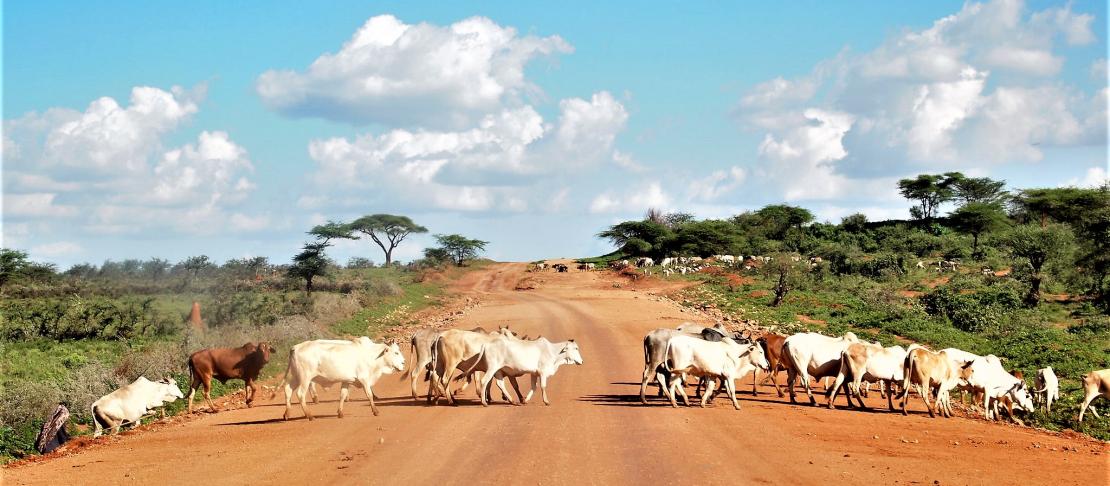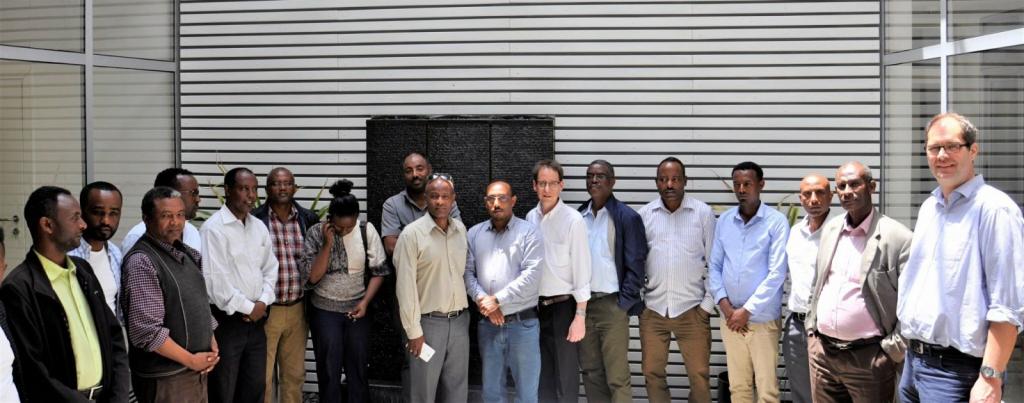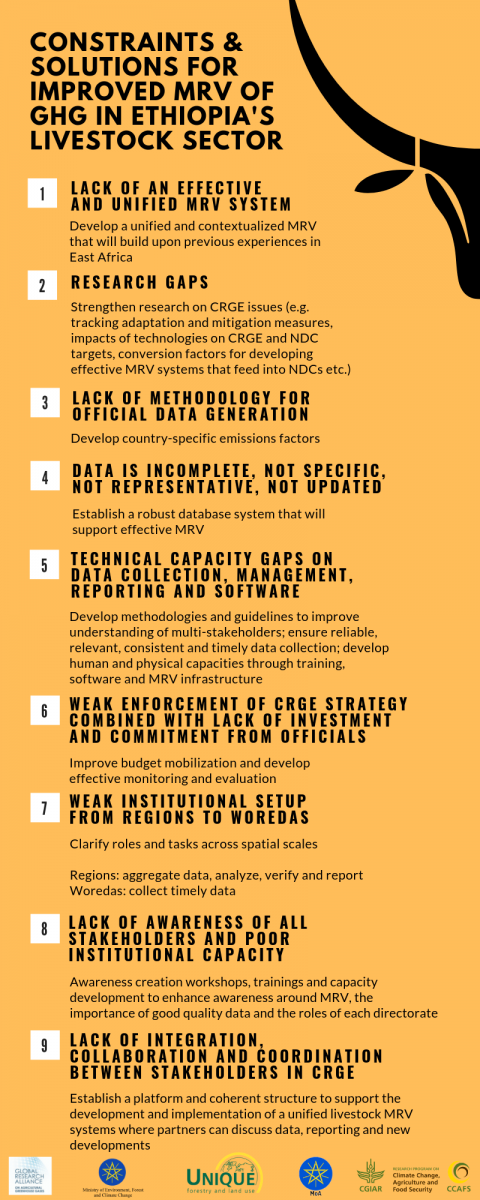Tracking Ethiopia’s livestock emissions to identify low-carbon development pathways

Key partners come together to develop robust systems for measurement, reporting and verification of emissions from Ethiopia’s livestock sector.
Livestock for Ethiopia is both yin and yang. On the one hand, it represents a large portion of the country’s economy and the source for agro-pastoral livelihoods; on the other hand, it causes a high percentage of the country’s greenhouse gas (GHG) emissions.
The CGIAR Research Program on Climate Change, Agriculture and Food Security (CCAFS) along with partners from UNIQUE Forestry and Land Use, Ethiopia’s Ministry of Agriculture (MoA), the Environment, Forest and Climate Change Commission (EFCCC) and the Global Research Alliance on Agricultural Greenhouse Gases (GRA) is working to strike a balance between these livestock dichotomies.

Workshop participants coming together to develop Ethiopia's livestock MRV system. Photo: G. Ambaw (CCAFS)
Representatives from these institutions gathered in Addis Ababa, Ethiopia, in March 2019 to plan a three-year project to develop a robust measurement, reporting and verification (MRV) system for GHG emissions from Ethiopia’s livestock sector. Tracking these emissions will streamline the sector’s reporting processes for Ethiopia’s Climate Resilient Green Economy (CRGE) Strategy, which informs the country’s Nationally Determined Contributions (NDC) to the United Nations Framework Convention on Climate Change (UNFCCC).
A collaboration of government institutions, research organizations and development partners will provide technical support for improving Ethiopia’s livestock GHG inventory and streamlining the data for CRGE reporting. This process will identify opportunities for substantial emissions reductions and provide a roadmap to achieving an increasingly low-carbon livestock sector.
To ensure the proposed MRV system is effective, comprehensive and well-coordinated, workshop participants identified solutions for current constraints to the MRV development process, as shown in the figure below.

Source: Compiled by authors from workshop report. S. Samuel (CCAFS)
Participants also identified key areas for capacity building:
- Refining CRGE scenarios, assumptions and calculation methodologies
- Developing Tier II factors (including country-specific emissions factors) related to dairy-cattle, beef feedlots, poultry and small ruminants
- Developing consistent excel tools and templates at regional and federal levels for MRV of priority activities with an interface to the Intergovernmental Panel on Climate Change (IPCC) software
- Addressing quality assurance and quality control procedures
- Creating a coordination platform to ensure coordination within the MoA and with international partners
Moving forward, partners will develop a capacity building work plan to address these issues. The project partners have drafted a concept note to the Australian Centre for International Agricultural Research (ACIAR) to secure support for the MRV system. A Memorandum of Understanding (MoU) that outlines priority actions and means of collaboration will be created. Together, the partners are creating the foundations for a contextualized MRV system of Ethiopia’s livestock sector.
Read more:
- Website: MRV Platform for Agriculture
- Report: Measurement, reporting and verification of livestock GHG emissions by developing countries in the UNFCCC: current practices and opportunities for improvement
- Poster: Improved greenhouse gas emission factors for smallholder livestock systems in East Africa
- Report: Using the CCAFS Mitigation Options Tool to identify mitigation co-benefits in Ethiopia’s land use sector
Seble Samuel is Communications and Knowledge Management Officer for CCAFS East Africa. Julianna White is Program Manager for CCAFS Low Emissions Development. Dawit Solomon is Regional Program Leader for CCAFS East Africa.